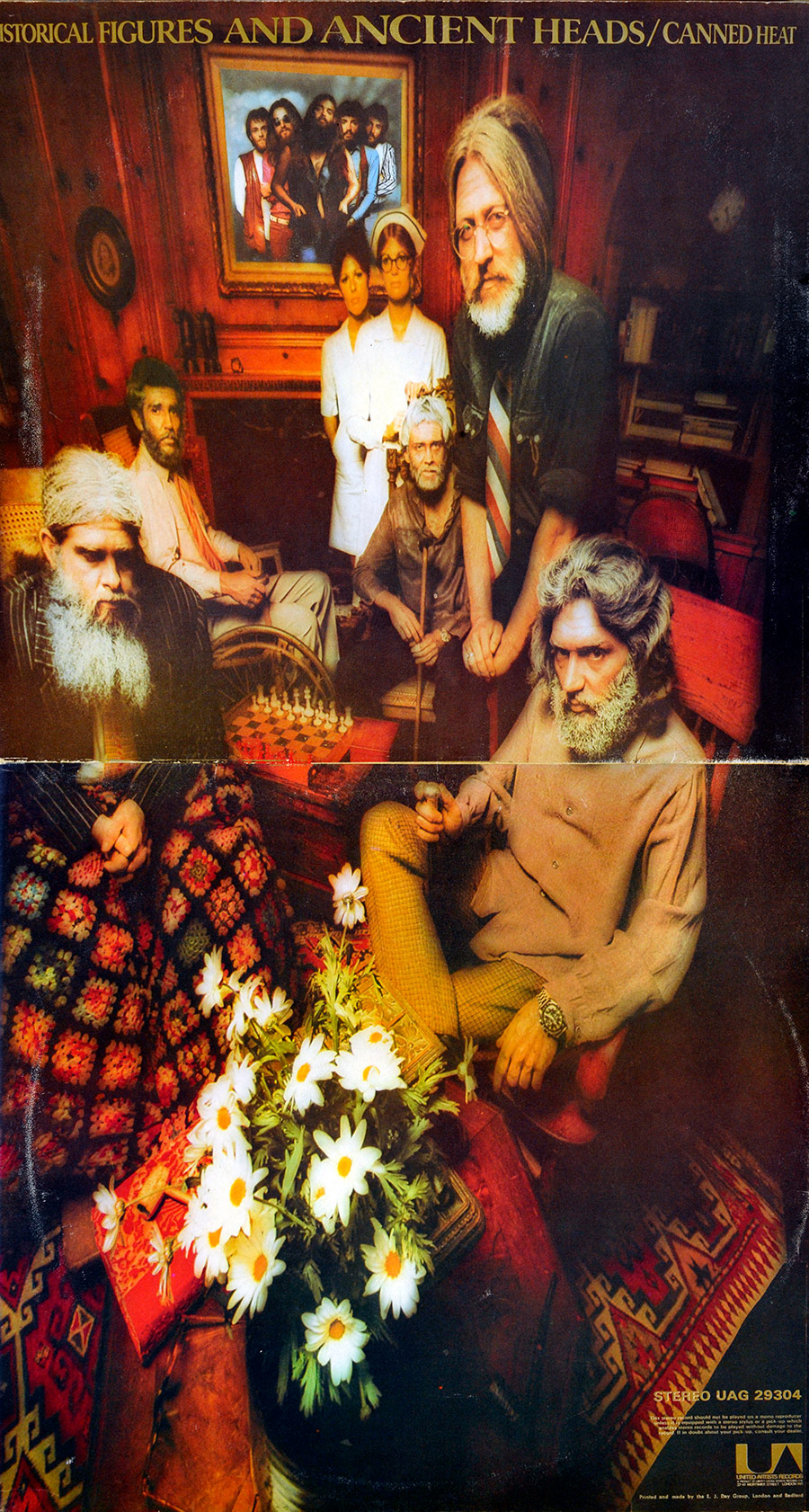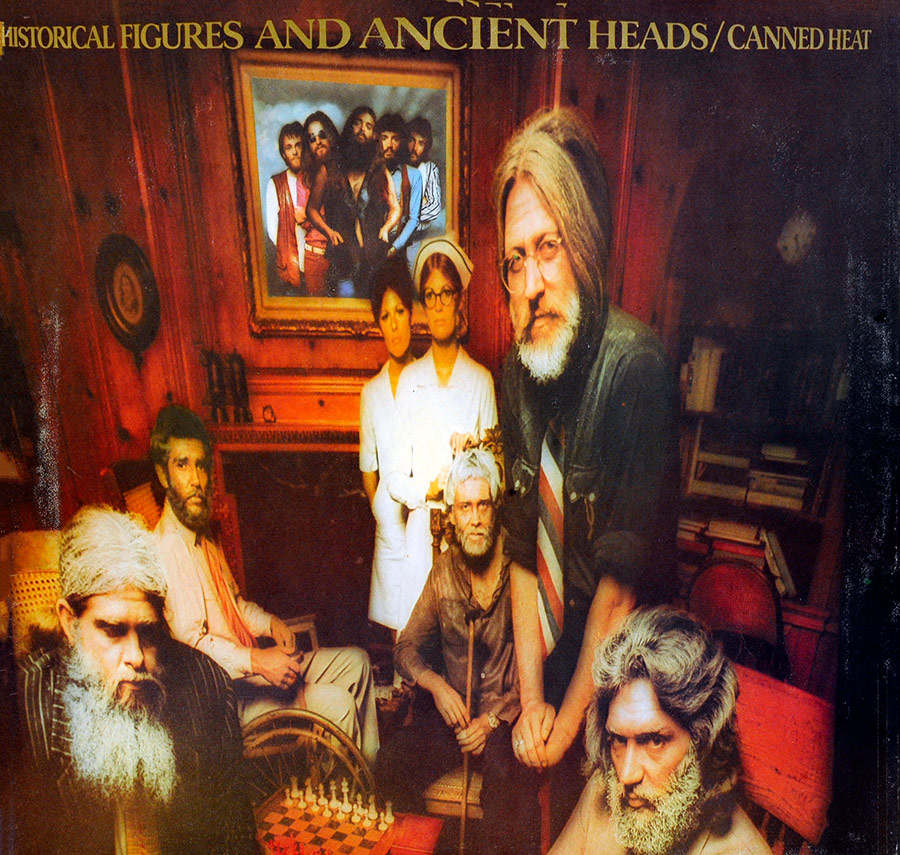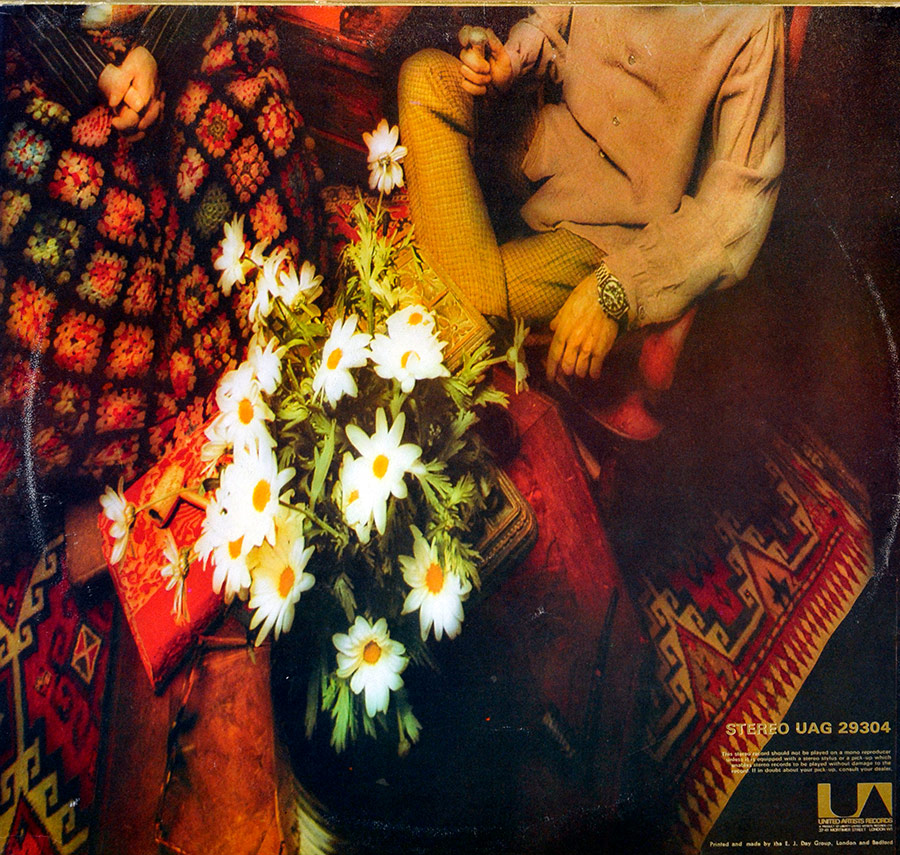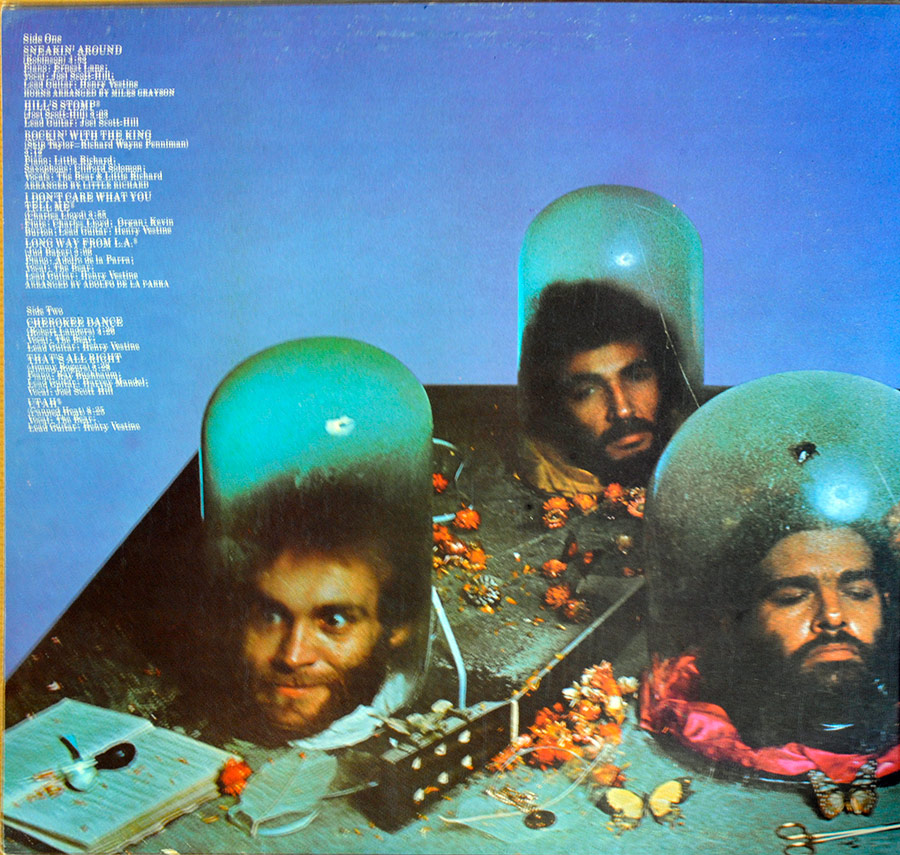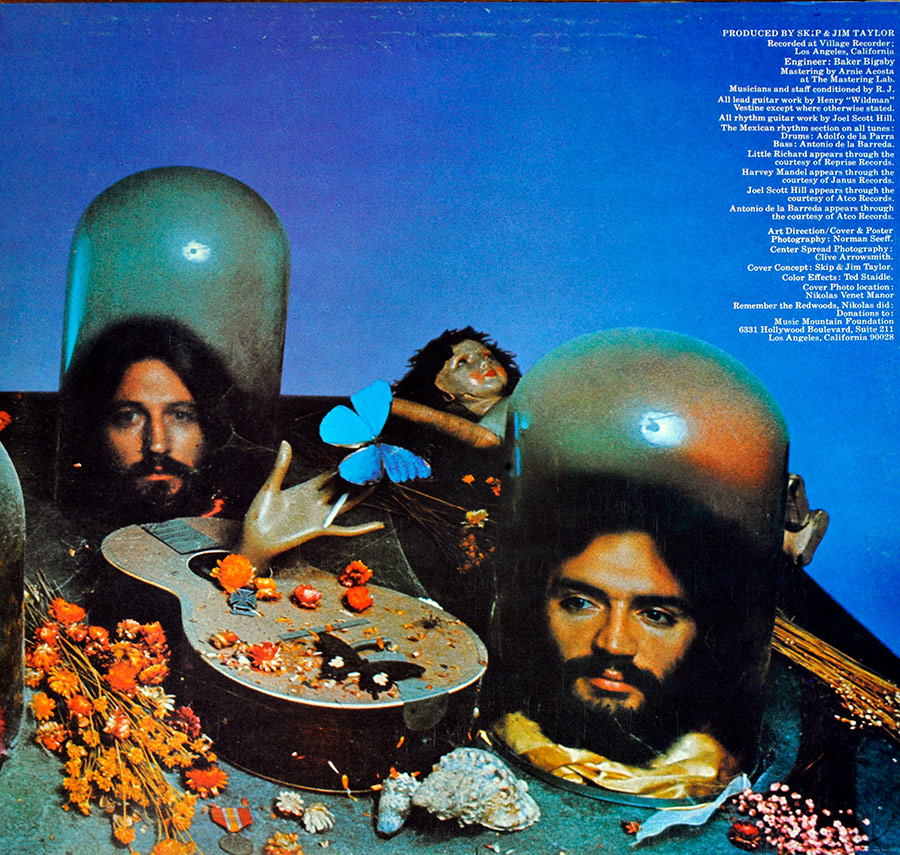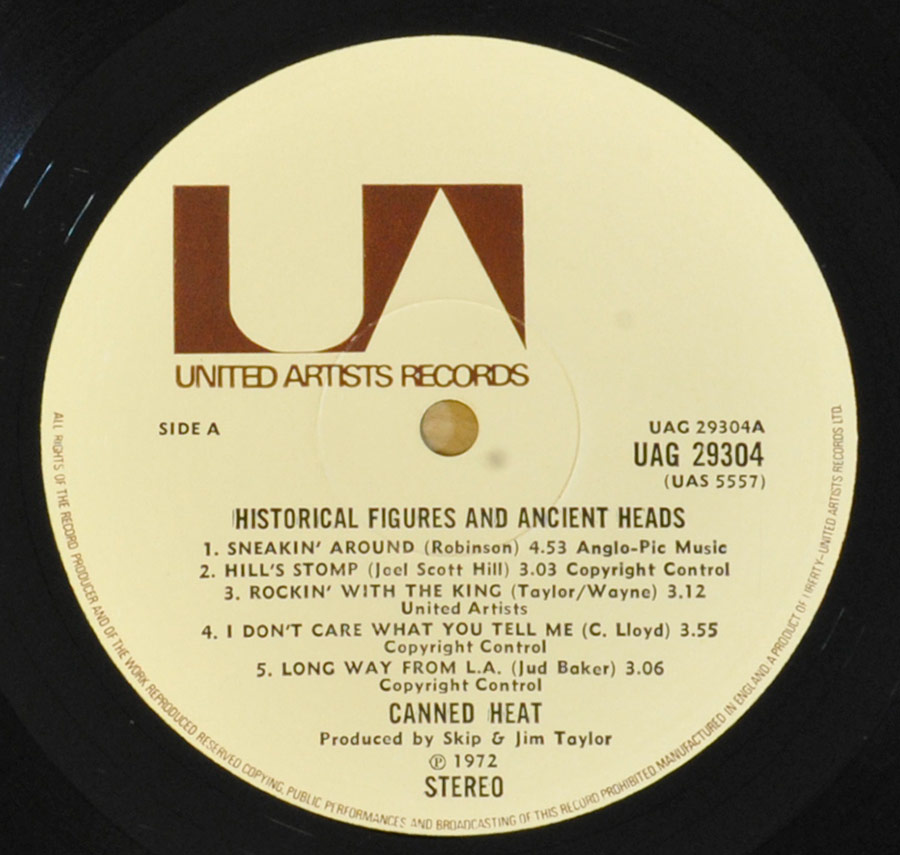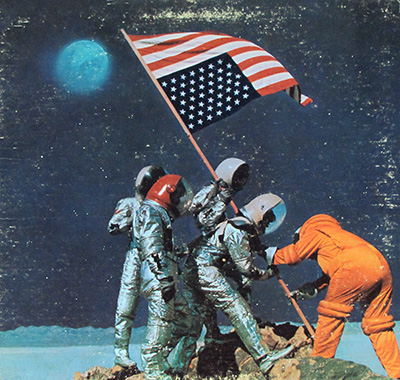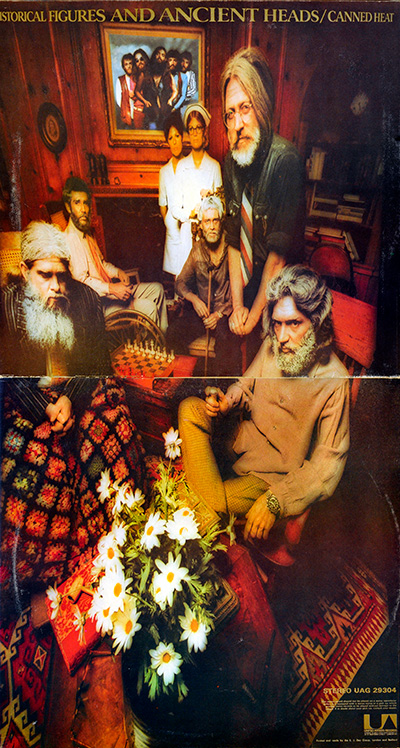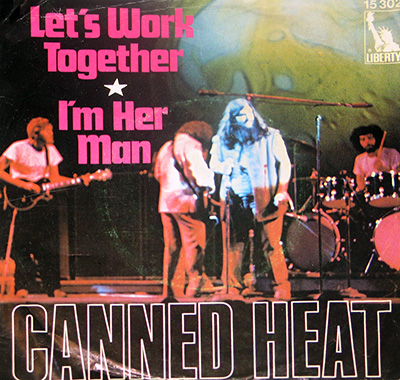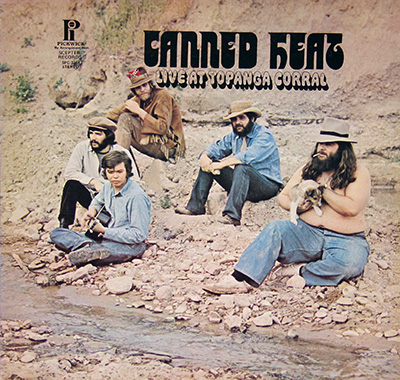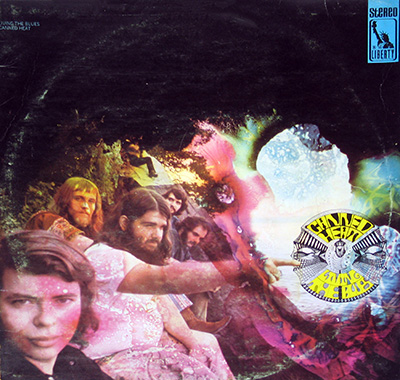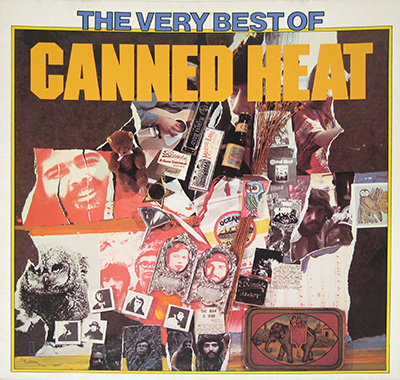"Historical Figures and Ancient Heads" Album Description:
Canned Heat's 1971 album, "Historical Figures and Ancient Heads," marked a crucial turning point in the band's blues-rock odyssey. Following the tragic loss of founding member Alan "Blind Owl" Wilson, the band soldiered on, embracing a more diverse sound while retaining their core boogie-blues roots. The album's striking gatefold cover art became inseparable from the music, adding a visual mystique that perfectly reflected the album's themes.
The Cover: A Tapestry of Time and Culture
The "Historical Figures and Ancient Heads" sleeve, designed by Norman Seeff, is a whirlwind of historical and cultural iconography. The front panel features a collage where a mustachioed Kaiser Wilhelm rubs shoulders with blues giant Robert Johnson, Abraham Lincoln, and a Native American Chief. Ancient sculptures, tribal masks, and even what appears to be a Mayan deity crowd the scene. It's a visual feast that hints at themes of history, cultural intersection, and possibly the timeless nature of the blues.
The inner gatefold reveals a large circular design – enigmatic and hypnotic. This symbol, composed of geometric shapes and faces, further cements the album's sense of reaching across time and cultures. Some have interpreted it as a mandala or perhaps a representation of the cyclical nature of history.
Music in Transition
The music within "Historical Figures and Ancient Heads" mirrored the eclecticism of the cover art. Canned Heat paid homage to their blues heroes with covers like Elmore James' "Dust My Broom" and the raw energy of "Rockin' With the King," featuring Little Richard on piano. However, the album also saw them experimenting with longer, more jam-oriented tracks and exploring new sonic textures. The inclusion of Charles Lloyd's flute on "I Don't Care What You Tell Me" added a touch of jazz-fusion to their blues-rock foundation.
